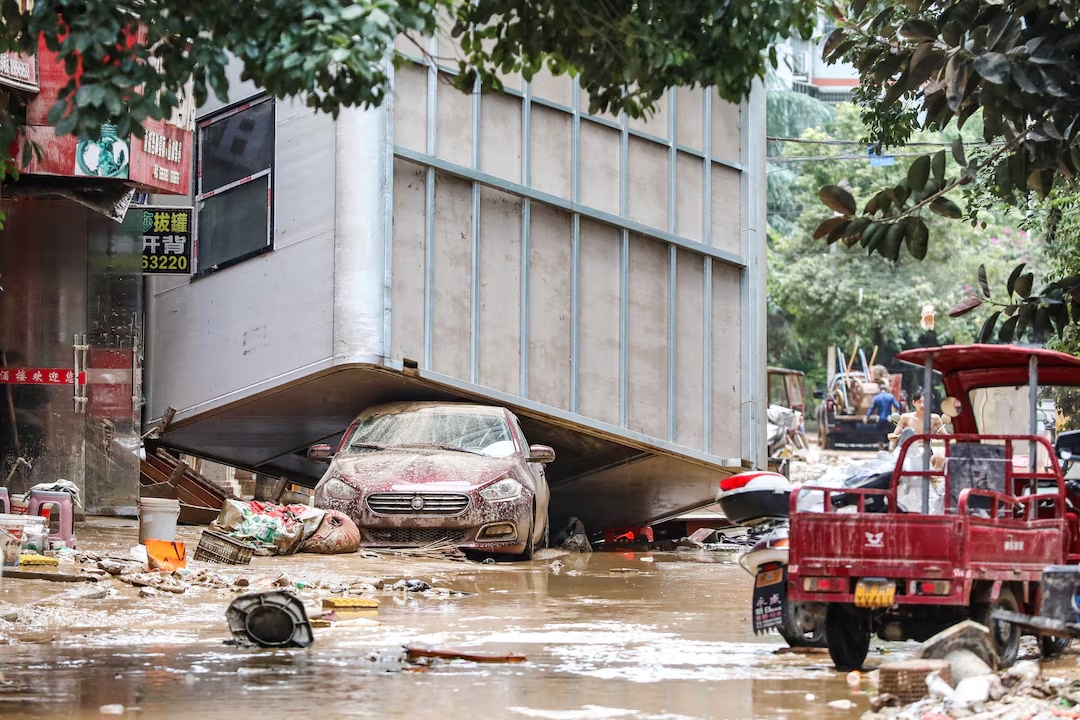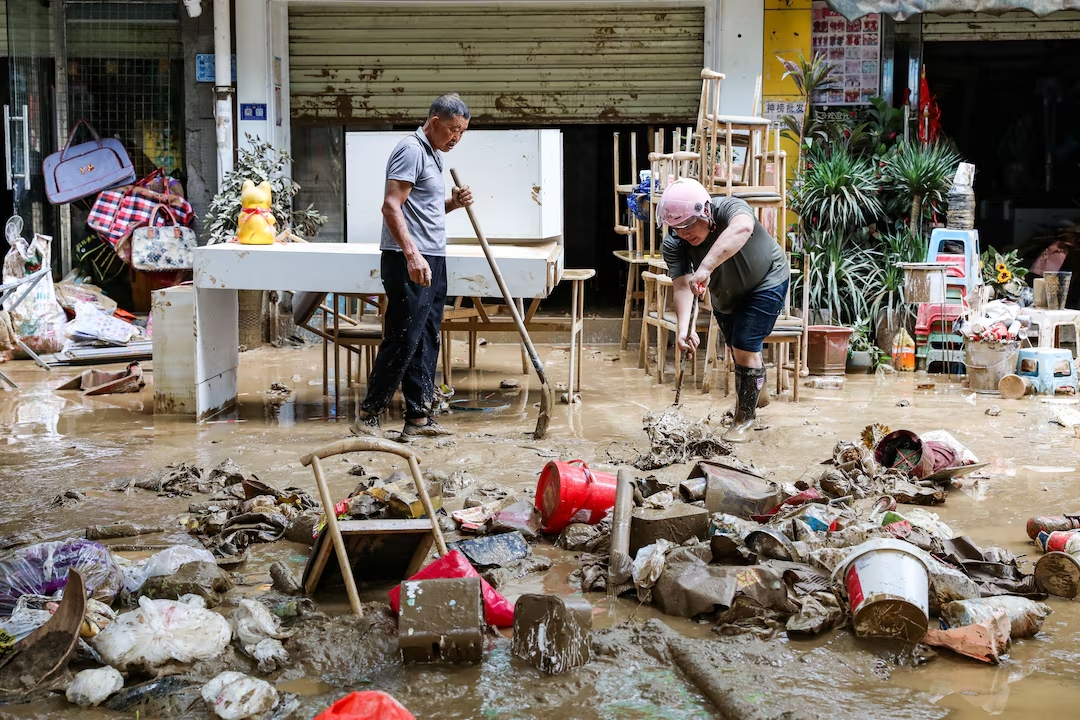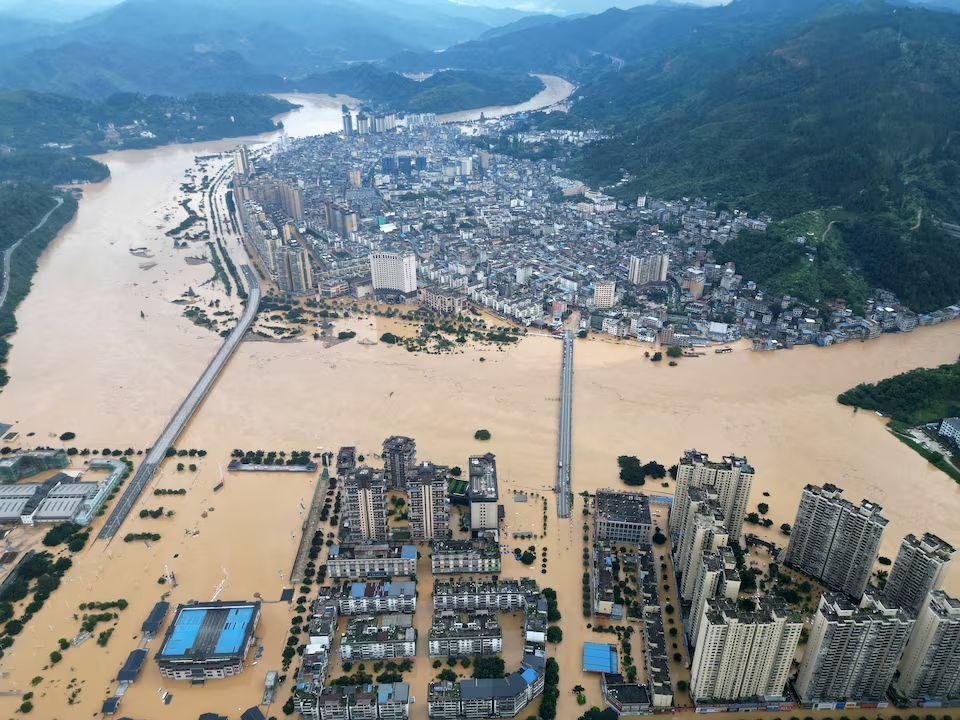Towns and villages by a major river in China's Guangxi lay half-submerged as floodwaters from a province upstream roared into the mountainous region, with the expected landfall of a tropical cyclone later on Thursday compounding disaster risk.

The flooding that overwhelmed the cities of Rongjiang and Congjiang in Guizhou province on Tuesday has spread downstream to other parts of southwest China, including rural settlements in Guangxi by the Liu river, which originates from Guizhou.
The Guangxi township of Meilin was the worst-hit, state media reported on Thursday, with floodwaters at their peak more than 4 metres (13 feet) above what was considered safe.

Even as dangerous surface run-off began to recede, southwestern China - from Guizhou and Guangxi to Chongqing, Yunnan and Sichuan - remained on alert for secondary disasters such as road collapses, landslides and hydro-dam overflows.
"Rural areas face significant challenges due to limited infrastructure and resources," said Chen Xiaoguang, professor at Southwestern University of Finance and Economics in Chengdu.
"Strengthening these systems in rural counties will be key to reducing the long-term impact of increasingly severe weather."
Urban areas typically have stronger capacity to respond to floods, he said, but not all cities are equally equipped. Rongjiang for instance is a county-level area where resources are more limited.
In more remote areas, challenges include insufficient coverage of monitoring stations, making localised precipitation forecasting difficult, said Meng Gao, professor at Hong Kong Baptist University.

On Tuesday, the Guizhou city of Rongjiang, located at the confluence of three rivers, was hit by a flood on a scale that Chinese meteorologists said could only happen once in 50 years, and at a speed that shocked its 300,000 residents.

The flow rate of one section of the Liu river in Rongjiang surged to 11,800 cubic metres per second, the equivalent of nearly five Olympic-sized swimming pools. That was more than 80 times the average rate of flow.At least six people were killed.
"This flood is a heavy blow to us," said a Rongjiang resident whose cake shop was completely inundated and small electric scooter used for deliveries was damaged beyond repair.

"My family is a poor household that has just escaped poverty. This cake shop is our family's only source of income."
Many displaced residents were temporarily staying at local hotels, which were also hosting rescue personnel and reconstruction workers, according to phone calls to more than 10 hotels in downtown Rongjiang.
In conversations with local water resource bureaus, Southwestern University's Chen said local staff emphasised how their work grew more intense during summer, actively monitoring weather patterns, reinforcing infrastructure, and rehearsing emergency responses in anticipation of extreme weather events.

As deluge-hit areas began to remove silt left behind by the flooding and restore power, telecommunications and water networks, rains from a tropical depression expected to make landfall in Guangxi on Thursday night could affect restoration and cleanup work or even risk a new round of flooding.

The tropical depression made landfall on China's island province of Hainan early on Thursday, and later again in Guangdong on the mainland, bringing more rain to a region still reeling from Typhoon Wutip two weeks ago.
Extreme storms and severe flooding, which meteorologists link to climate change, increasingly pose major challenges for Chinese officials, as they threaten to overwhelm ageing flood defences, displace millions of people and cause billions of dollars in economic losses.
"Climate change is making extreme weather more frequent and unpredictable," said Chen.
"While progress has been made, continued adaptation and investment - especially in forecasting technologies and resilient infrastructure - remain essential."
Reporting by Joe Cash, Lanqin Tian and Shi Bu in Beijing and Farah Master in Hong kong; writing by Ryan Woo; Editing by Jamie Freed and Raju Gopalakrishnan